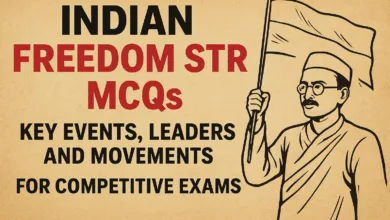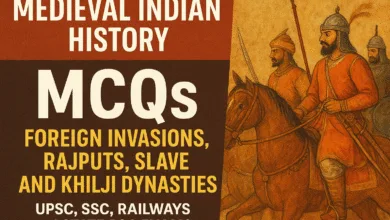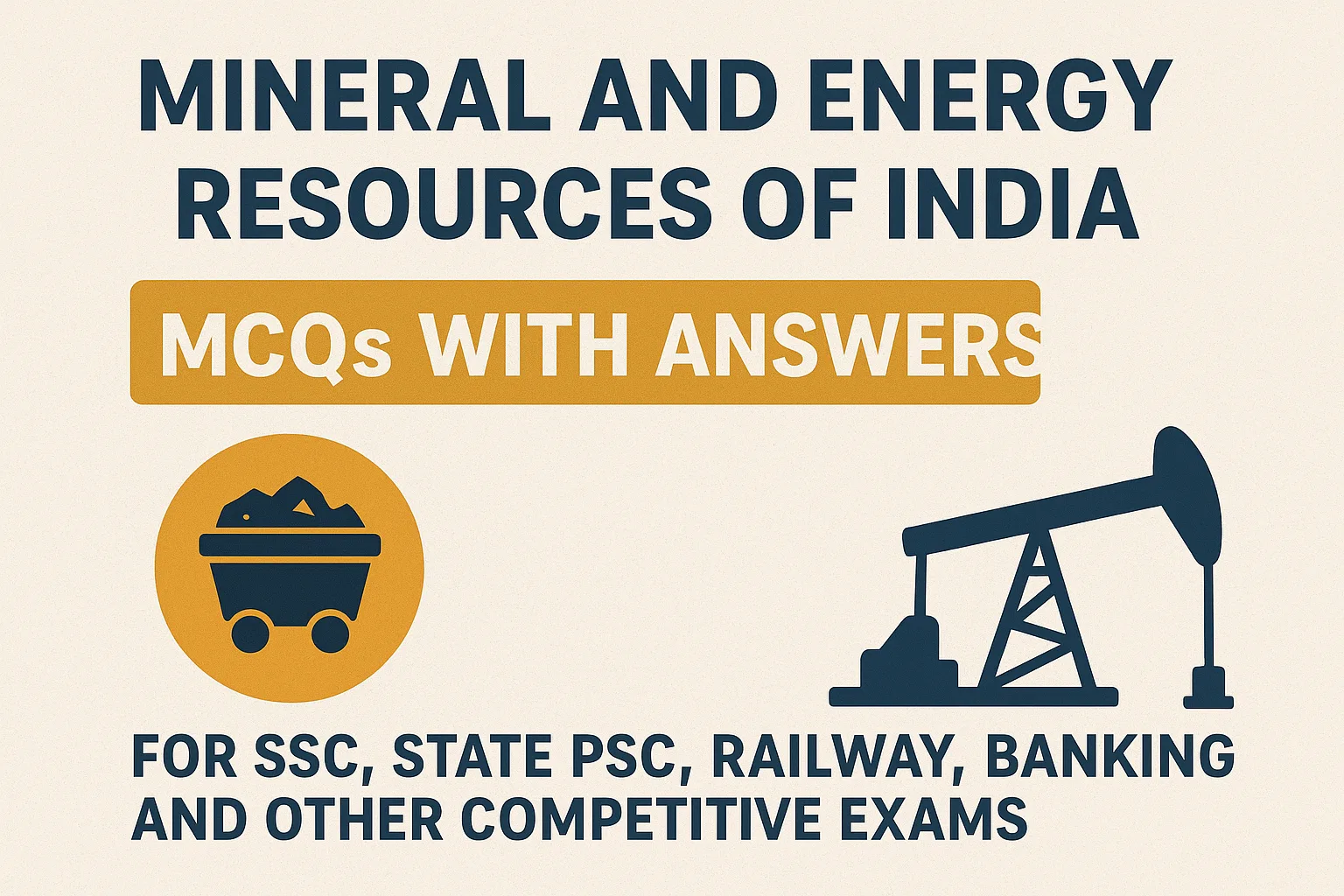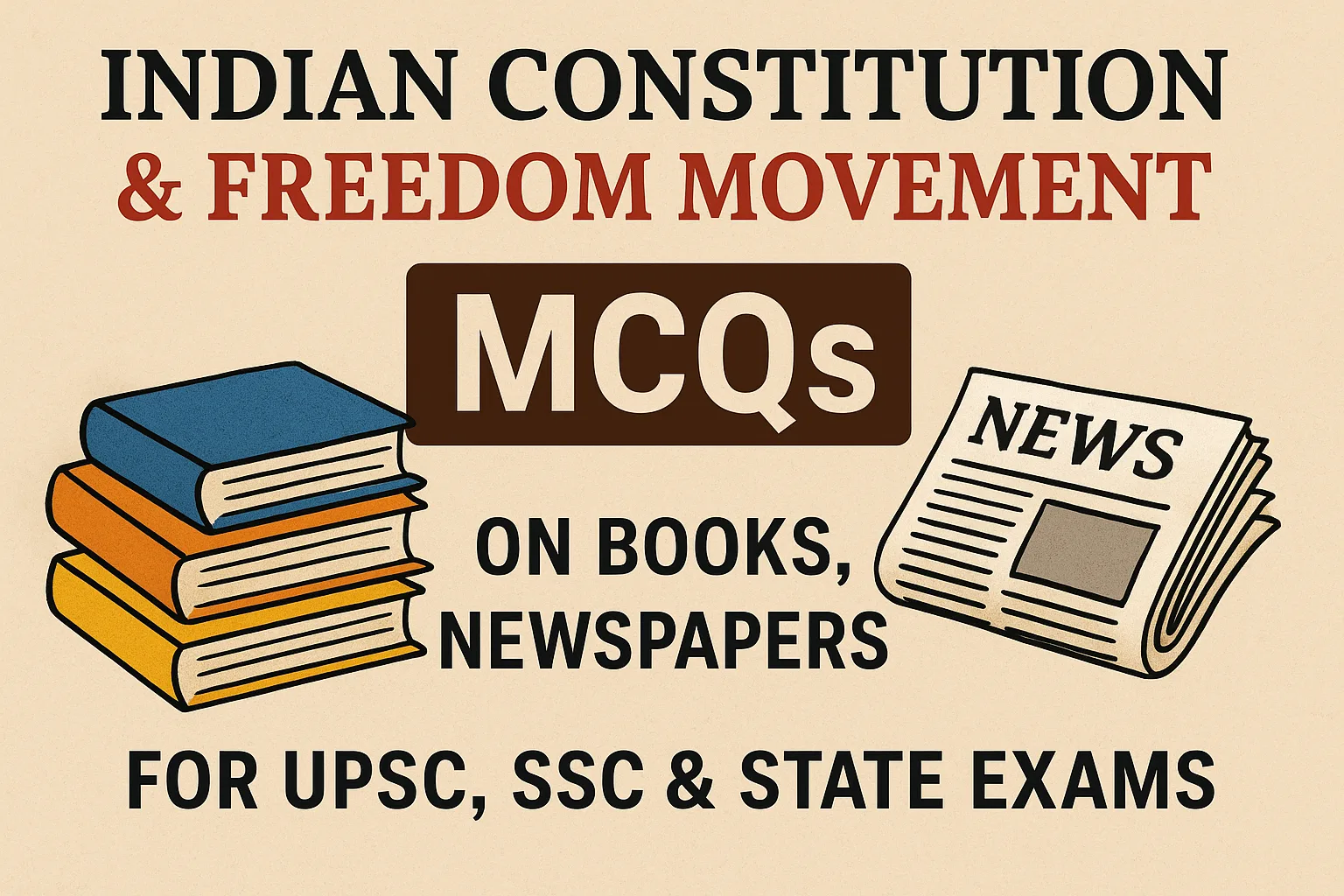Geography Continents, Oceans MCQs for UPSC, SSC & Govt Exams in 2026
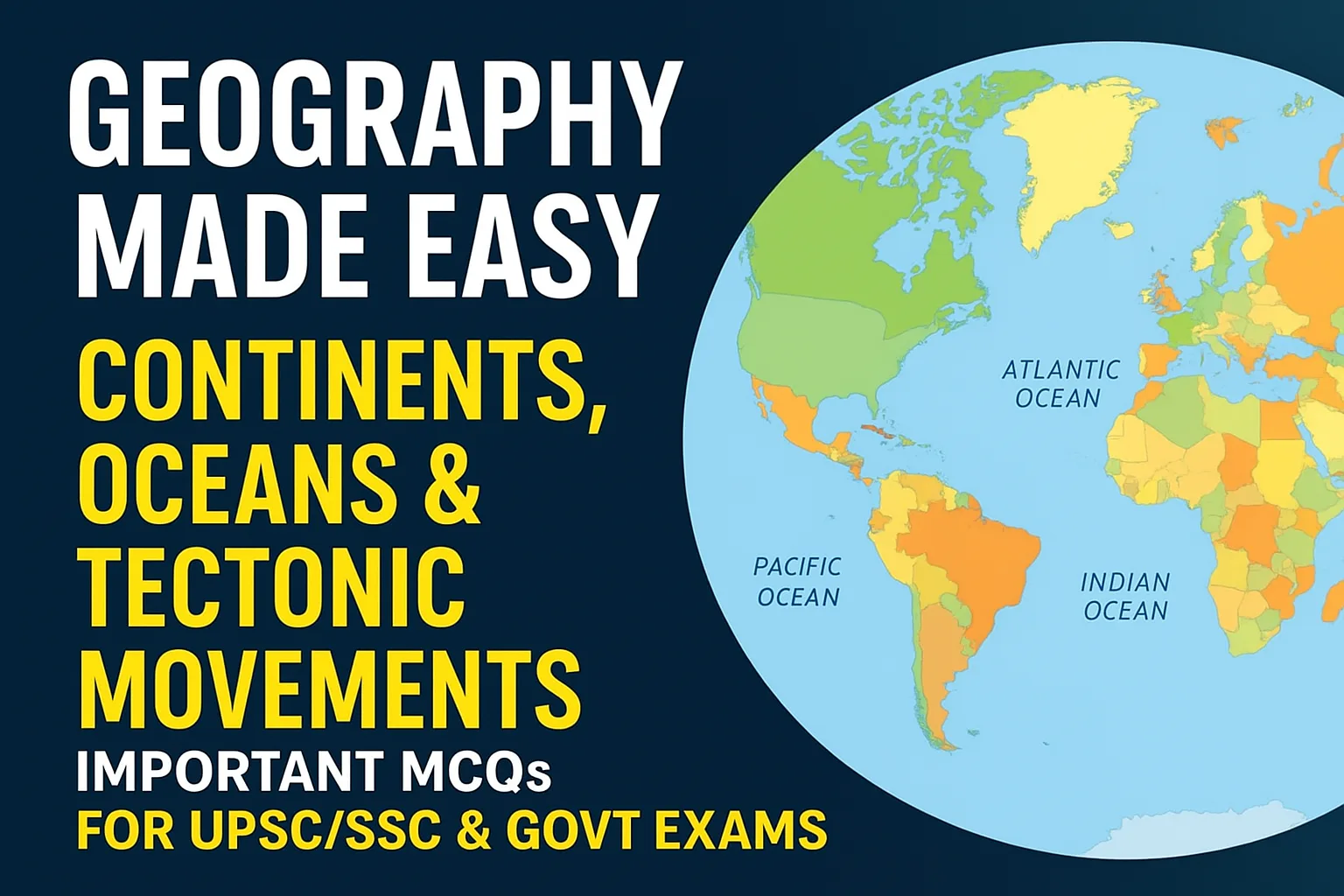
Learning about where the continents and oceans are on Earth is a really interesting part of geography. It shows how the Earth’s surface has changed over a long time. This includes things like how land moves (continental drift), how new ocean floor is made (seafloor spreading), and how the Earth’s plates move (plate tectonics). These ideas help us understand how mountains, volcanoes, earthquakes, and tsunamis are formed. They also explain things like deep ocean trenches and cracks in the Earth’s surface called rift valleys. Knowing where continents, oceans, and lines like latitudes and longitudes are is also important for learning about the world.
According to Alfred Wegener’s Continental Drift Theory, all the continents were once part of a single large supercontinent. What was this landmass called?
a) Gondwanaland
b) Laurasia
c) Pangaea
d) Panthalassa
Answer: c) Pangaea
The vast water body that surrounded Pangaea during the time of the supercontinent was known as:
a) Tethys Sea
b) Panthalassa
c) Mediterranean Sea
d) Pacific Ocean
Answer: b) Panthalassa
Which of the following provides the strongest geological evidence in support of Wegener’s Continental Drift Theory?
a) Distribution of rainfall patterns
b) Fossil evidence of Glossopteris plant
c) Location of deserts across continents
d) Modern distribution of rivers
Answer: b) Fossil evidence of Glossopteris plant
The process of Seafloor Spreading, proposed by Harry Hess, suggests that new oceanic crust is formed at:
a) Transform faults
b) Subduction zones
c) Mid-ocean ridges
d) Ocean trenches
Answer: c) Mid-ocean ridges
In Seafloor Spreading, the movement of tectonic plates is driven mainly by:
a) Earth’s magnetic field
b) Convection currents in the mantle
c) Gravitational pull of the Moon
d) Rotation of the Earth
Answer: b) Convection currents in the mantle
The Plate Tectonic Theory, which is widely accepted today, explains the movement of continents and oceans based on:
a) Ocean currents
b) Position of stars
c) Movement of lithospheric plates over asthenosphere
d) Wind circulation patterns
Answer: c) Movement of lithospheric plates over asthenosphere
How many major tectonic plates are recognized on the Earth’s surface according to Plate Tectonic Theory?
a) 5
b) 7
c) 10
d) 12
Answer: b) 7
Which of the following ocean trenches is the deepest point on Earth?
a) Java Trench
b) Puerto Rico Trench
c) Mariana Trench
d) Tonga Trench
Answer: c) Mariana Trench
The plate boundary where two plates move away from each other, creating new crust, is called:
a) Convergent boundary
b) Divergent boundary
c) Transform boundary
d) Subduction boundary
Answer: b) Divergent boundar
The Himalayas were formed as a result of:
a) Divergent plate movement
b) Oceanic crust collision
c) Collision between the Indian and Eurasian plates
d) Transform plate faulting
Answer: c) Collision between the Indian and Eurasian plates
The Ring of Fire, known for its active volcanoes and frequent earthquakes, is mainly located around which ocean?
a) Atlantic Ocean
b) Pacific Ocean
c) Indian Ocean
d) Arctic Ocean
Answer: b) Pacific Ocean
The convection currents that drive plate movement occur in which layer of the Earth?
a) Crust
b) Mantle
c) Outer core
d) Inner core
Answer: b) Mantle
Which of the following volcanic islands was formed due to hotspot volcanic activity rather than plate boundary movement?
a) Japan
b) Hawaii
c) Philippines
d) Iceland
Answer: b) Hawaii
The Mid-Atlantic Ridge, one of the longest mountain ranges in the world, is a result of:
a) Convergent plate activity
b) Divergent plate activity
c) Transform plate activity
d) Subduction activity
Answer: b) Divergent plate activity
The Andes Mountains in South America were formed due to:
a) Divergent plate movement
b) Subduction of oceanic plate beneath continental plate
c) Transform fault activity
d) Hotspot volcanism
Answer: b) Subduction of oceanic plate beneath continental plate
The theory of Plate Tectonics unifies which two earlier theories into one comprehensive explanation?
a) Seafloor Spreading and Evolution
b) Continental Drift and Seafloor Spreading
c) Mountain Building and Climate Change
d) Ocean Currents and Winds
Answer: b) Continental Drift and Seafloor Spreading
Earthquakes are most commonly associated with which of the following?
a) Stable continental interiors
b) Plate boundaries
c) Polar regions
d) River valleys
Answer: b) Plate boundaries
A Tsunami is usually generated by:
a) Heavy rainfall and floods
b) Underwater earthquakes and volcanic eruptions
c) High-speed winds in oceans
d) Melting of glaciers
Answer: b) Underwater earthquakes and volcanic eruptions
The Pacific Plate is primarily moving in which direction?
a) Westward
b) Eastward
c) Northward
d) Southward
Answer: a) Westward
Which plate boundary is responsible for the rift valleys in East Africa?
a) Convergent boundary
b) Divergent boundary
c) Transform boundary
d) Subduction boundary
Answer: b) Divergent boundary
The Indian Plate was once part of a larger landmass. Which supercontinent did it break away from before colliding with Asia?
a) Pangaea
b) Laurasia
c) Gondwanaland
d) Panthalassa
Answer: c) Gondwanaland
Which of the following is considered the youngest mountain range in the world, formed by recent tectonic activity?
a) Alps
b) Andes
c) Himalayas
d) Rockies
Answer: c) Himalayas
The volcanic island of Iceland is located on which type of plate boundary?
a) Divergent boundary at Mid-Atlantic Ridge
b) Convergent boundary of Pacific Plate
c) Transform fault boundary
d) Subduction zone of Eurasian Plate
Answer: a) Divergent boundary at Mid-Atlantic Ridge
The Great Rift Valley of East Africa provides clear evidence of:
a) Oceanic plate subduction
b) Continental rifting at divergent boundaries
c) Collision between two continental plates
d) Transform fault activity
Answer: b) Continental rifting at divergent boundaries
The movement of continents continues even today. On average, how fast do tectonic plates move annually?
a) Few millimeters per year
b) 1–5 centimeters per year
c) 10–15 centimeters per year
d) 1 meter per year
Answer: b) 1–5 centimeters per year
